How to See and Be Seen
By Dag Pike
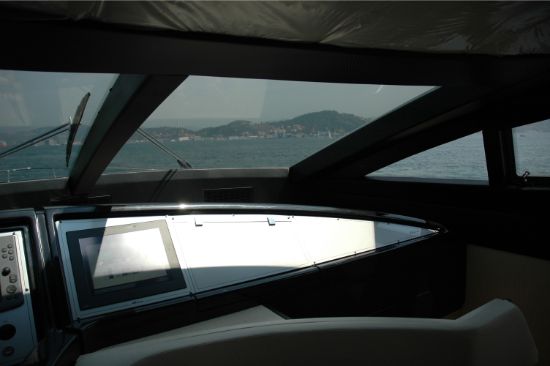
It is not a lot to ask. When you are out at sea, you want to be able to see around the horizon to pick out landmarks and to see other boats and ships. It is a basic requirement of seamanship. And yet, when looking at many modern motor cruisers, the view out of the pilothouse windows can leave a lot to be desired.
You also want other boats and ships to be able to see you, which works most of the time in daylight. However, it can be quite a challenge at night when many boats have very poor or even illegal navigation lights. Some seem to be a little more than a glow-worm in the dark. Some boats even have the wrong lights showing.
It is time that we sat up and took notice both to make ourselves highly visible at night but also to ensure that we can see out of the windows to make sure we can see others.
Being Seen
When I am at sea at night, I want to be seen by other vessels, particularly any big ships that are around. A yacht can be a tiny radar target for ships. If the seas are a bit lively, they may not pick you up on the radar at all. This is why you need bright navigation lights so that they can see you visually early on. It is not just the big ships that you need to worry about, but other yachts and small craft as well. So good navigation lights are an essential part of any yacht’s equipment.

Perhaps now you can understand why I was horrified at a recent boat show to see a large RIB (rigid-hull inflatable boat) on display with not only tiny navigation lights but also the wrong lights. This RIB had a pair of sidelights in the required red and green located high up on the arch mast. The stern light was between them showing FORWARD.
This has a much smaller sector of light than a proper masthead light. Not only was the possibility of seeing the boat from ahead reduced, but there was no stern light at all. Any craft overtaking that RIB would not see anything until it was on top of it.
COLREGS
The requirement for navigation lights are laid out in the Regulations for the Prevention of Collision at Sea, best known as the COLREGS. These lay out the lighting requirements for various classes of vessels. For most cruising boats, they are required to have the port and starboard side lights, a masthead light showing from forward to 22 1/2° abaft the beam on each side, and a stern light that fills the gap between all of the other lights. It makes sense because not only can you see the boats, but you can get a rough idea of its heading, depending on the combination of lights that you can see.
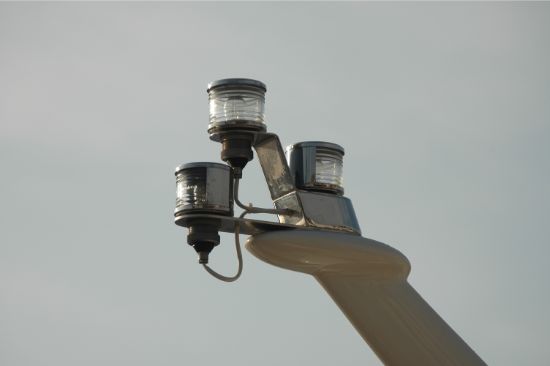
Going back to that RIB with no stern light, it would be at risk if it put to sea at night and another boat was overtaking it because no lights would show. That may be an extreme example, but on many yachts when there is a stern light fitted, it will not always do the job that it is expected to do.
Good Stern Lights – And Visible
Have a look around and see how many yachts fly a flag that hangs over the stern light so that at night you might get what looks like a flashing light as the flag moves in the wind. On some yachts, the tender obstructs the stern light when it is stowed. Or, the stern light may be fitted so low down that it will be barely visible in the wake of the boat.
Let’s now consider how you keep a lookout. When you look at motor cruisers these days, there are many of them where there is only limited visibility astern from the helm. This applies to many cruising yachts. At night it can be worse than in the daytime because there may be internal lights creating reflections. Few people will look astern to see what is coming up behind.
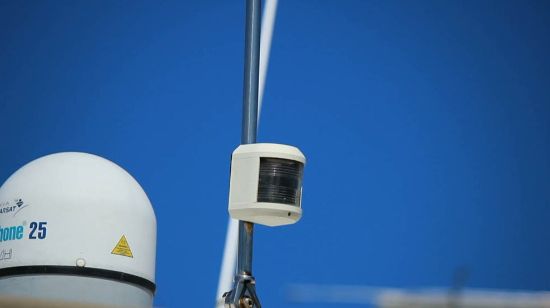
I know that any yacht that's overtaking another one must keep clear of the boat it is overtaking. But if they can’t see you because your stern light is not showing bright and clear, then they will struggle to keep clear. You want to know that they are there in case you want to alter course. In my mind, the stern light is probably the most important light on the boat. So try and see how it might look when seen from another boat.
Improper location. That RIB was just one example of what you can find on new boats. I did a sea trial a couple of years ago on a brand-new motor cruiser from one of the major builders. Here the stern light and the masthead light had been reversed. Not only was this potentially dangerous, but it makes you wonder what sort of quality control was existing in the yard that was building the boat.
Perhaps it is just that the staff in boatyards do not have any practical boating experience these days. On another motor cruiser, the searchlight had been mounted in front of the masthead light so that it was obstructed.

Then there are the navigation lights that are located where they can be obstructed by a person standing at the helm. This is only likely to happen in smaller boats, such as RIBs and sports cruisers, where the light might be on the arch mast aft and the person at the helm is taller than the mast.
The Brighter, The Better
For your navigation lights, fit the brightest that are possible. What can look like a bright light close to may look quite dim from a distance. Coming out of a harbor one night, we could see a radar target ahead but no sign of a light. It was only when we got close that we picked up the stern light of the sailing yacht we were overtaking.
Sailboats tend to be very poorly lit, even when meeting the requirements of the COLREGs because electricity is a valuable commodity on sailboats. So they don’t want to waste it on bright lights. Then they are not required to have a white masthead light. The green and red sidelights do not always show up well at night. In the harbor, sailboats are notoriously difficult to see against bright shore lights.
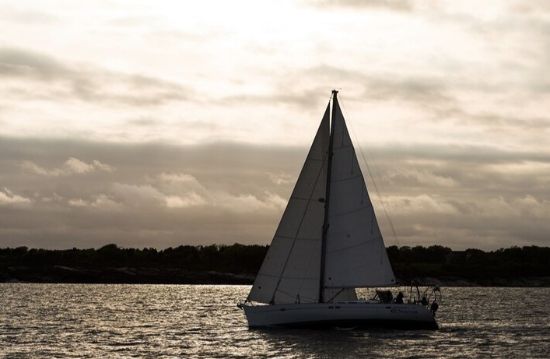
One problem that you can be faced with when you have a bright white masthead light is that the light shines over the foredeck. Here it lights up the whole forward area and reflects from white surfaces and those lovely bright stainless-steel rails. This can half blind you to what is going on in the world beyond the light. The main solution is to fit a plate under the light so that it does not shine downwards.
Owner Caveat. There does not appear to be any systematic checking of the safety features on modern designs. I could give you example after example of yachts that are not fully seaworthy. However, don’t blame it all on the designers and builders. As the skipper of the yacht, it is you who is responsible. You must take time to check things out before you go to sea. You think that you can see other boats that are around you, either visually or on the radar, but can they see you?
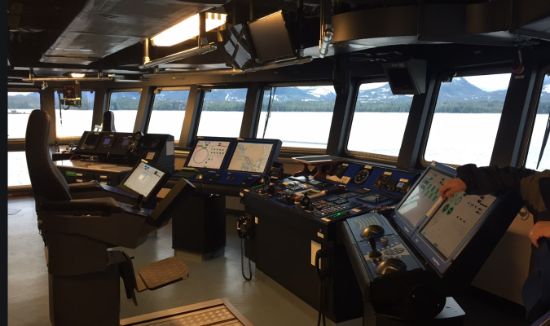
Poor Visibility
We have mentioned visibility from the pilothouse astern where it can be very poor or even non-existent, but so many boats I see these days also have poor or restricted visibility ahead. In the interests of style, you can often see the mullions on the pilothouse windows molded to such a width that you could hide a supertanker in the blind spot behind them.
Just as bad, many - if not most - yachts have nav screens that obscure this windscreen forward. These nav screens need to be lowered below the bottom sill of the window.
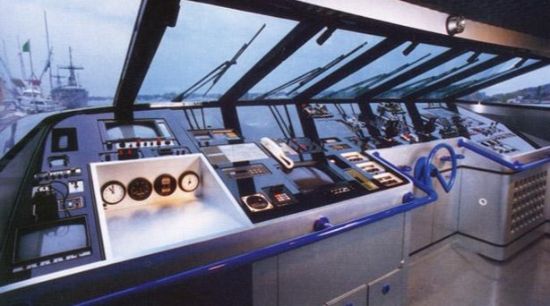
In daylight, you would probably be aware of the blind spot, but at night it is not so obvious. Another vessel coming across your bows might disappear from view until it is quite close. In the days when you walked around the pilothouse, you would vary where you looked out. But today, where the skipper is almost always seated, you don’t think to check out those potential blind spots.
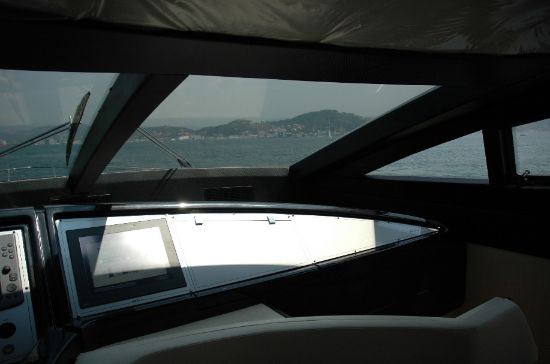
Another problem that can seriously reduce your visibility is when heading into the sun. The bright sun shining on the water can hide a boat out there. If you are going to be equipped for this sort of problem, you need a sunscreen that you can pull down over the windscreen to mitigate the effects of the sun.

Reflections on a Windshield. Another cause for concern are reflections on a sloping windscreen when the sun shines through it and picks up the dashboard area, which you see reflected in the glass. This is because the dash is a light color and not black like every automobile dash on the planet. There is a message here and most builders haven’t gotten it. Usually the reason why is that the dash is a white fiberglass part and it would cost extra money to cover it or paint it.
Just as bad can be having a shiny surface that reflects the sun into your eyes from the dashboard top or even from the electronic screens.
Poor design is partly to blame for many of these problems. However, it is up to you, the skipper, to be aware of the reduced visibility so that if you can’t change it, at least take steps to mitigate the problem. One of the best solutions is to head up onto the flybridge if there is one, where you should have a commanding view.
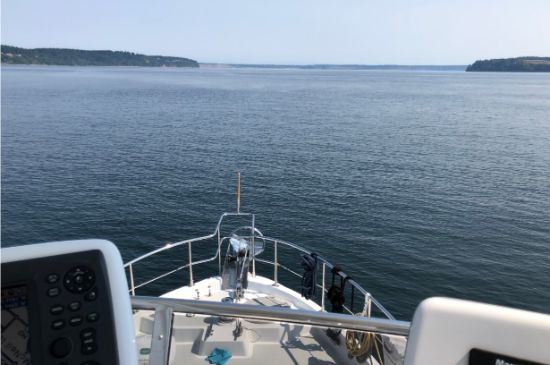
Collisions Made Easy
I can’t find figures for yacht collisions, but when ships collide something like 30% of the ships do not see the other ship until it hits them. Can I suggest that you do not become part of this 30%? Keep a good all-round lookout when you are out at sea and make sure that your boat is visible to others. The designers and builders of many modern boats can have a lot to answer for, but it is you as the skipper that has to take the responsibility.